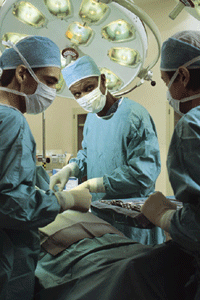What are the True Costs of Breast Implants?

The real costs of breast implants come after the initial scars have already healed. They include additional financial burdens as well as serious health problems associated with breast implants. When you had it all up, the cost of breast implants really do outweigh the benefits.

Additional Financial Burdens
No matter what kind you opt for - saline or silicone, round or natural - breast implants are not permanent devices. Most women will require many more maintenance surgeries over their lifetimes where the implants will have to be explanted (and another pair implanted) or removed for good. This is because implants shift, leak and rupture, but also because of capsular contracture, a painful condition that results when tissue grows and tightens around the implants.
Women with silicone implants will also have to have routine MRI's done to make sure their implants have not ruptured. (Because, unlike saline, silicone is an extremely toxic substance.) MRI's can cost anywhere from $400-$2000 a pop.
And don't think your insurance company will cover any of those expenses. Women with implants (as well as women who have ever had implants) are routinely denied even basic insurance coverage.
So how much do implants really cost? Multiply the initial cost of implants by 3 or 4 if you're older and 5 or 6 if you're younger (because they last, on average, 5-10 years). That will probably take care of implant maintenance. Then add the additional costs of routine MRI's and living without medical insurance, and you'll probably discover, as we did, that breast implants are just too much of a financial risk.
Additional Costs to Your Health
Breast implants are also very risky in terms of your health. Even if you do opt for saline implants over silicone implants, there are a host of health problems that you can expect to deal with in addition implant rupture and slippage. Capsular contracture is one risk, but breast implants also make it more difficult to detect cancer, which means longer, more painful mammograms and more radiation. Breast implants also increase your risks developing infection (and many infections are now mutating beyond the capacities of antibiotics). And breast implants decrease nipple sensitivity, and make it harder to breast feed.
Those are the more common risks associated with saline implants. Women who opt for silicone implants (even the new FDA approved implants) risk developing autoimmune conditions such as Lupus, Rheumatoid Arthritis, and Multiple Sclerosis. Others suffer from a variety of symptoms including cognitive dysfunction, short-term memory loss, Sjögren's syndrome (dryness in glands, such as the mouth, kidneys, eyes, and lungs), scleroderma, dermatomyositis, severe joint and muscle pain, incapacitating fatigue, swollen lymph glands, skin problems, peripheral numbness, multiple allergies, headaches, hair loss, and sunlight sensitivity. Silicone is such a toxic substance that even implants that don't rupture or leak are known to cause severe damage to the internal organs and immune system.
What Can You Do?
One, arm yourself with knowledge. Remember that your doctor makes his or her living implanting these devices into women just like you, so you can't always count on them to give you the complete story. Another thing you can do is consider the many alternatives to breast implants discussed on this site. Our favorite (and we've tried everything) are herbal breast enlargement pills, which balance your hormones and grow your bust line naturally - to the tune of 1-3 cup sizes! There are also a variety of breast enhancement creams, which tighten and tone the skin to decrease sagging, and pumps, which work by expanding your breast tissue, thus increasing their size.



